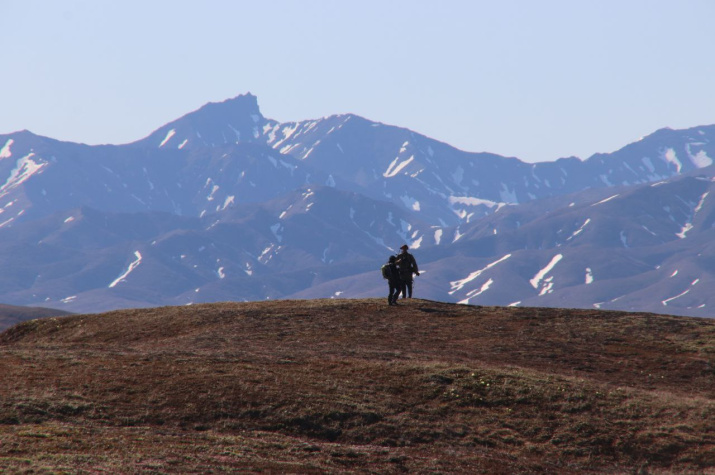The spring migration of birds in the south of Chukotka turned out to be much less pronounced in 2022. These are the data of the expedition of the Russian Society for the Conservation and Study of Birds (ROSIP), which finished the current field season. The head of the expedition team was Elena Lappo, senior researcher at the Institute of Geography of the Russian Academy of Sciences. In her opinion, the reason for the unusual phenomenon could be the cold weather in late spring and early summer.
The largest of the currently known flocks of the spoon-billed sandpiper breeds in the south of Chukotka near the village of Meynypilgyno. 20 years ago, this place became a model site for long-term monitoring of the number of this and other bird species. Since then, the ROSIP’s expedition has been working there. Since 2012, its participants have been monitoring the fate of almost every spoon-billed sandpiper marked with a ring with an individual code. The birds were monitored in breeding areas, during flybys, and in wintering areas.
In 2022, the work of the expedition took place in three stages. Since the end of May, ornithologists were monitoring the arrival of birds, carried out a general survey of the territory, and located the spoon-billed sandpiper and other birds arriving from wintering. Then, in June, the main task was registering territorial pairs and searching for nests. From the end of the first month of summer until mid-July, brooding ringing took place, as well as the study of the soil biota and the waders' food base, the creation of a list of species and a base collection, the identification of preferred feeds, the study of the distribution of insects in feeding areas and their interannual dynamics. The work of ornithologists and entomologists this season ended in mid-July.
Throughout August, geographers and specialists in geoinformation systems worked in the south of Chukotka. They described habitats and assessed their natural and anthropogenic dynamics, as well as its impact on birds.
For reasons that are still unclear, the spring migration of birds, especially waders, was weakly pronounced. Many species that were previously common in these places were not found here in 2022 (great knot, pectoral sandpiper, long-billed dowitcher) or were extremely rare (wandering tattler, ruddy turnstone, dunlin, red-necked stint). The number of local breeding waders (Pacific golden plover, ringed plover, lesser sand plover, especially red-necked phalarope and Temminck's stint) was also reduced.
“Perhaps it was a consequence of unfavorable food conditions – a cold period at the turn of May and June, as well as a small amount of food sources after a cold autumn and extremely early snowfall in 2021,” said Elena Lappo.
The total number of all recorded birds in the vicinity of the hospital in 2022 is 96 species (the total number in 20 years is 190 species of birds).
“The spoon-billed sandpiper is a model species, the flagship species. This is one of the rarest bird species in the world, extremely unusual because of the shape of its beak, attracting the attention of both specialists and bird lovers around the world. It is endemic to Chukotka. And from the very beginning, special attention has been paid to it in the work program of our expeditions. Unfortunately, we have to state the fact that the number of spoon-billed sandpipers is constantly decreasing, both at the main monitoring site and at remote sites," Elena Lappo added.
The scientists continue to do everything possible to preserve the rare species. An important factor is the protection of its habitat. So, in 2022, work continued on the design and creation of Spoon-Billed Sandpiper Land Nature Park. It was proposed to reduce the territory of the park in order to avoid problems with the local population and conflict with industrial activity in the region (aimed at the extraction of oil, gas, and coal). The areas of mineral deposits partially coincide with the former nesting sites of the spoon-billed sandpiper.
“Thus, the proposed territory of the park in the new project will be significantly reduced, but all the places significant for the spoon-billed sandpiper will remain. We also believe it is necessary to increase the activity of environmental education on the issue of protection of rare bird species and their habitats in the region not only for children, but also for adults," Elena Lappo believes.




